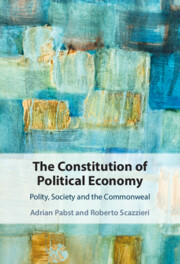Book contents
- The Constitution of Political Economy
- The Constitution of Political Economy
- Copyright page
- Contents
- Tables
- Preface
- Acknowledgements
- Introduction
- Part I Interdependence and the Economic Constitution
- Part II Political Spaces and Policy Actions
- 5 A Political Economy of the Body Politic
- 6 Constellations of Interests and Institutional Architecture
- 7 Policy Actions in an Embedded Polity
- 8 Conclusion
- References
- Name Index
- Subject Index
7 - Policy Actions in an Embedded Polity
from Part II - Political Spaces and Policy Actions
Published online by Cambridge University Press: 03 August 2023
- The Constitution of Political Economy
- The Constitution of Political Economy
- Copyright page
- Contents
- Tables
- Preface
- Acknowledgements
- Introduction
- Part I Interdependence and the Economic Constitution
- Part II Political Spaces and Policy Actions
- 5 A Political Economy of the Body Politic
- 6 Constellations of Interests and Institutional Architecture
- 7 Policy Actions in an Embedded Polity
- 8 Conclusion
- References
- Name Index
- Subject Index
Summary
Both the economy and the polity are embedded in a relational field. This field generates the range of relative positions that individuals and groups take within it while making other positions impossible. The constitutions of the economy and of the polity reflect objective arrangements of positions providing constraints and opportunities for human agency. They may also shape actors to follow specific courses of action rather than others. Certain policy actions may be compatible with the existing economic constitution but not with the existing political constitution, and vice versa. Only policy actions compatible with both the economic and the political constitution can be conducted without changes in either. A constitutional heuristic is needed to assess whether a certain policy is feasible under a given constitutional settlement or not. This chapter focuses on the multi-dimensional and multi-level architecture that policy design should follow in light of the relevant constitutional heuristic. Policy actions are designed and implemented across manifold modes of association in the material sphere and plural modes of collective action in the political sphere. The chapter provides a framework grounded in constitutional heuristic for the analysis of embedded policy measures in the industrial, credit, and international trade fields.
- Type
- Chapter
- Information
- The Constitution of Political EconomyPolity, Society and the Commonweal, pp. 187 - 214Publisher: Cambridge University PressPrint publication year: 2023



